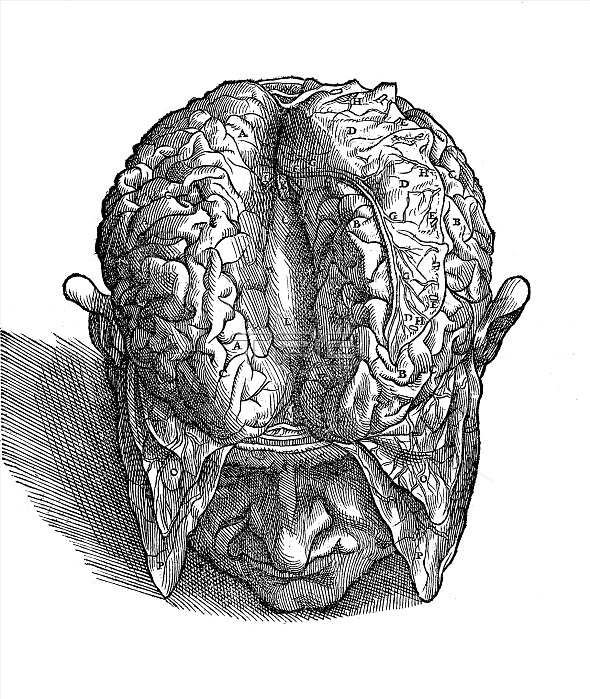
Figure of the brain with both membranes stripped off, 1555. Vesalius was determined to show the inside of the brain, just as he had with so many other organs. When he took up the subject of brain anatomy and physiology, he had to deal not only with Galen's ideas but those of medieval theologians, who had done little or no direct observation. Contemporary descriptions of the brain divided it into ventricles, much like the heart, and declared it the origin of a substance called "animal spirit," which it distributed to the rest of the body. De Humani Corporis Fabrica (On the Fabric of the Human Body) is one of the most influential works in the history of Western medicine. It was conceived and written by 28 year old Andreas Vesalius (December 31, 1514 - October 15, 1564) a Belgian anatomist and physician. He was a professor at the University of Padua and later became Imperial physician at the court of Emperor Charles V. He was both a gifted dissector and a learned scholar whose great contribution was to apply to anatomy the critical methods developed by the Renaissance humanist scholars. In 1564 he went on a pilgrimage to the Holy Land. When he reached Jerusalem, he received a message requesting he again accept the Paduan professorship, which had become vacant. The ship he sailed on was wrecked on the island of Zakynthos. Here he soon died in such debt that a benefactor paid for his funeral. He was 49 years old.
| px | px | dpi | = | cm | x | cm | = | MB |
Details
Creative#:
TOP22171217
Source:
達志影像
Authorization Type:
RM
Release Information:
須由TPG 完整授權
Model Release:
N/A
Property Release:
No
Right to Privacy:
No
Same folder images:

 Loading
Loading